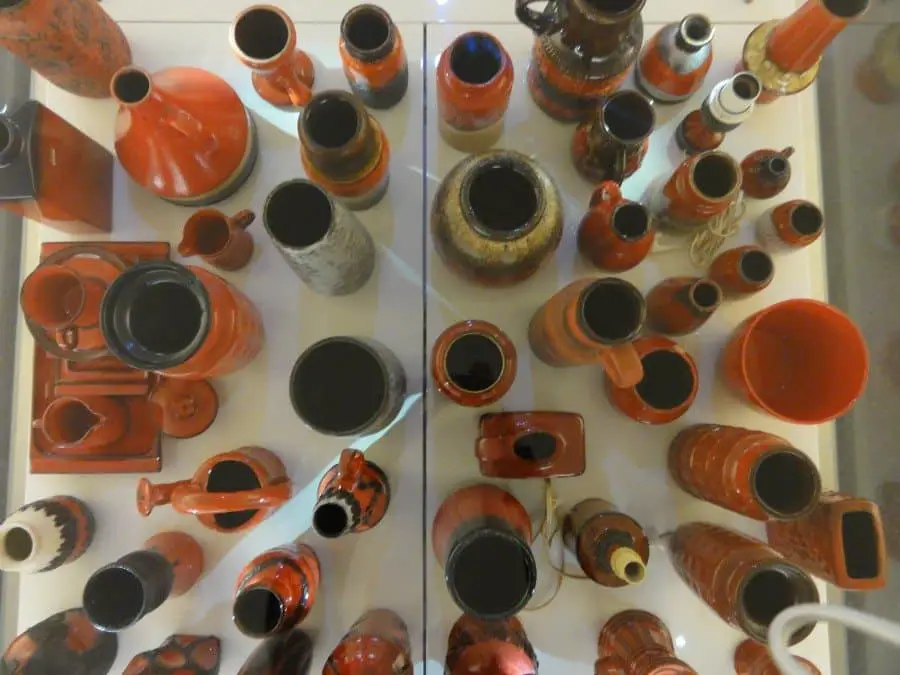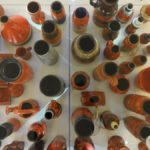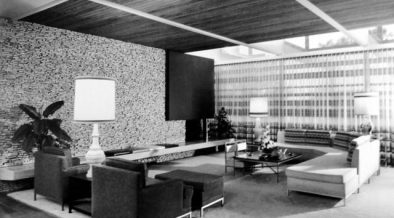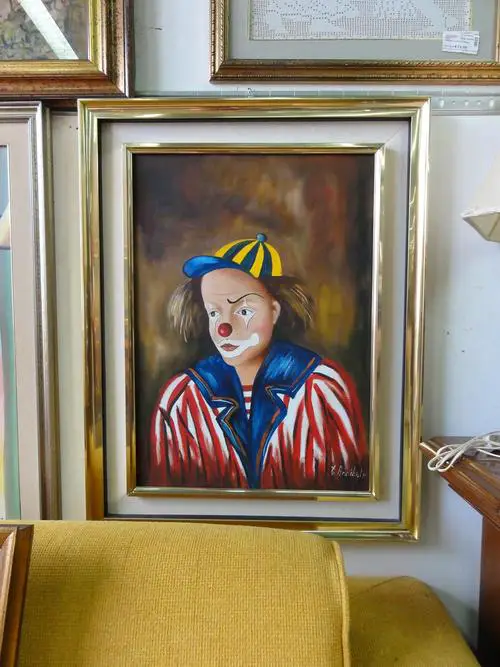As you can see from the gallery above, one of my biggest addiction are Mid Century German vases.
Every time I go thrifting, I come back home with at least one new vase…it’s ridiculous, I know. 🙂
Anyway…during the 60s, one of the most famous German potteries manufacturer was Scheurich. Its potteries are still very easy to find in flea markets and stores; at least in Europe. And because are so common, they MUST be cheap!
Unfortunately is not always like this…
Lets say that the average price -basing on my thrifting experience- should be between 6 and 10 euros: it depends from the rarity of the motif, the colors, the size and the general status.
Scheurich: A Brief History
Scheurich has been founded in 1928 by the Scheurich cousins, but only in 1948 started an household ceramics production.
It mainly produces vases and flower pots but also ashtrays, candlesticks, mugs, clocks buffet, wall reliefs etc.
Scheurich market hegemony began at the end of the 60s. Low prices combined with a populist design was its strategy to mass-produce and keep the success.
To keep also the costs down and maximize the production, Scheurich designed their products in order to use the same decoration for different models. The design was renovated twice a year to match the changing customers tastes.
How to recognize an original Scheurich vase
The vases are usually signed with ‘W. GERMANY’ or ‘WEST GERMANY’ followed by 3 digits -indicating the model number- a dash and 2 numbers which indicate the height of the vase.
In the 1990, “WEST GERMANY” changed to ‘Made in Germany’ both in the bottom of the vase and in the stickers.
Scheurich always used s white clay for its products.The clay color is normally visible on the bottom edge of the vase.
Another way to recognize them, are of course the stickers that also give an indication of the production period.
Some manufacturers, including Scheurich, used to change the stickers design every once in a while to indicate a specific production period.
The most famous motifs are: Montignac -hand painted, 1972-1973-, Amsterdam -onions motif, 1974-1975- like the one in the first pic of the gallery and Fabiola -dark-red enamel overflowed-.
I hope that the next time you’ll see a West-German vase during your thrifting tours, you’ll remember this post and my info to recognize an original Scheurich one that on average should never be expensive. I’m planning to write about other Mid Century German pottery manufacturers so, if you don’t want to miss the next post about them keep following Mid Century Home for free trough the RSS by the Mail List or Twitter !
You will only receive inspiration for your home!!
The last pic of the gallery is from Westgermanyvazen
Ciao!



























